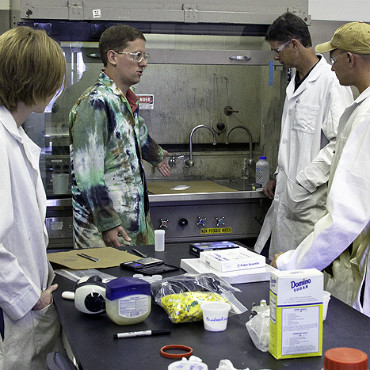The national laboratory has launched a Web portal aimed at helping public and private partners detect and deal with explosives.

Instructors discuss aluminum-based explosives as part of an advanced course on threats from homemade bombs. The course was created by the Los Alamos Collaboration for Explosives Detection, which is offering its expertise via a new Web portal.
Researchers at one of the national laboratories that oversaw development of some of the most powerful bombs ever are offering their expertise to help defeat explosive threats.
Program managers at Los Alamos National Laboratory said the Los Alamos Collaboration for Explosives Detection (LACED) portal is aimed at building collaboration between public and private partners to enhance the detection of explosives.
The LACED site is a virtual gateway to expertise and capabilities for countering all types of explosives, predominantly through enhanced detection capabilities, according to the lab. The site, which went public in January, provides expertise in sometimes extremely specialized fields.
Los Alamos has a deep bench of explosives experts. Along with Lawrence Livermore National Lab, it has been conducting classified design work for nuclear weapons since 1952. Los Alamos' experts include physicists, engineers, chemists, mathematicians, and computational, biological, materials and geological scientists.
Program managers for LACED said that given the lab's long experience, its researchers can anticipate explosives' effects and minimize their impact.
Lab officials said the collaborative project is made up of 57 experts who span 18 technical divisions at Los Alamos and 11 fields of expertise, and they have produced more than 100 publications related to the detection of explosives.
The LACED portal offers specific information on nearly anything that can explode. For example, it seeks to raise awareness of homemade explosives and provide detailed training on improvised explosive device safety. The portal also provides access to detection technologies, advanced image analysis, surveillance tools, remote detection and spectroscopy to find trace quantities of explosive vapors and residues.
NEXT STORY: Privacy guidelines issued for government drones






